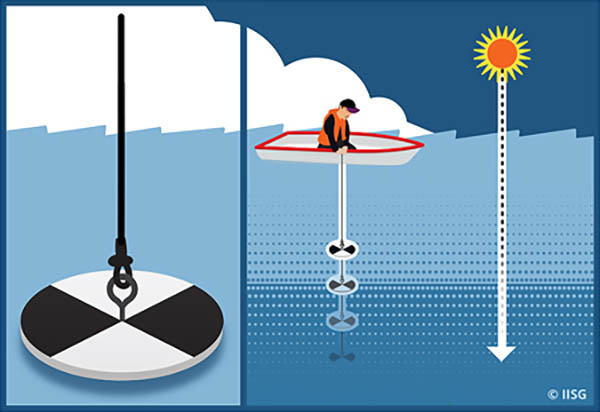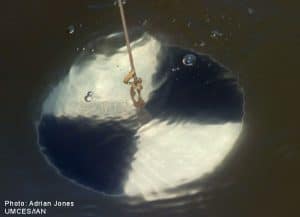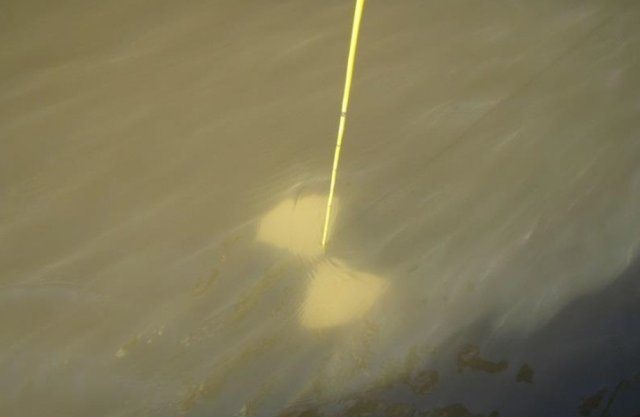Ever wonder why some water quality reports talk about water clarity while others measure turbidity? Even though the two measures might seem to be one and the same, there are important differences.
Water clarity is a measure of how much light penetrates though the water column Ė in other words how transparent the water is. Itís measured with a Secci Disk attached to a drop line with depth markings. The disk is lowered into the water until you can no longer see it and the length of line recorded. It provides a direct measure how far down into the water light can reach. However, the readings can be affected by weather conditions and sun position (thatís why our water quality teams always go out at the same time in the morning on testing days). Wind and cloud cover can reduce the visibility of the Secci disk, so those conditions are also noted.
Turbidity is determined by comparing a collected water sample to a set standard. It is a measure of the cloudiness or murkiness of the water that was collected at the point of collection. Whereas a Secci disk measures an entire column of water from the surface to the point of where it is no longer visible, water collected for turbidity tests are more collection point specific. Our experiences find turbidity tests to be more problematic than assessing water column transparency.
Water clarity is reduced by the presence of suspended solids like silt from runoff after a big rain or stirring up of the bottom after a storm. Overabundant populations of microscopic plankton, such as algae, usually due to excess nutrients can also make water cloudy. Suspended particles near the water surface absorb additional heat from sunlight, raising surface water temperature.
By conducting Secci measures on a regular basis over time weíve been able to establish baselines and identify trends of key physical attributes of Little Lagoon. Moderate levels of turbidity can indicate a healthy, well‐functioning ecosystem in which plankton flourish at a reasonable level to form the foundation of the food web, but high turbidity and low clarity are indicators or potential problems. To more fully understand what is happening in Little Lagoon we also assess key nutrients like Phosphorus, other key indicators such as water temperature and dissolved oxygen levels and conduct microscopic analysis to estimate phytoplankton populations.
Clear water is critical for the growth and survival of both plants and animals in the lagoon. Aquatic grasses and other plants grow best in clearer water because sunlight can reach deeper depths and support photosynthesis, which in turn helps oxygenate the water. Fish, crabs, and other aquatic animal life also rely on clear water to see whatís around them, catch prey, and breathe. Water clarity has been excellent at all five of the sites we monitor the last 6 weeks.
Interested in joining the Little Lagoon Water Quality monitoring team? Please contact Dennis Hatfield at dennishatfield17 at gmail dot com Team members receive hands on training and are asked to be available once per month for about 3 hours per outing. Our sampling program begins at 9AM on a sampling day and ends by about noon.
https://www.usgs.gov/.../wate.../sci...dity-and-water
https://www.nalms.org/.../the.../what-is-a-secchi-disk/
https://www.chesapeakemonitoringcoop.org/.../Water...
#littlelagoon #LLPS #waterquality










 24Likes
24Likes LinkBack URL
LinkBack URL About LinkBacks
About LinkBacks




 Reply With Quote
Reply With Quote



I’ll be sliding into town March 10-14. Can you have it warm and sunny for me then? And also, how about having the fish biting??? :D
2025 5pm PIER CLOSURES